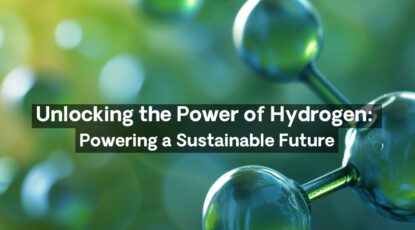In a world increasingly focused on sustainable and resilient energy solutions, microgrids are becoming necessary. But what are microgrids? At its core, a microgrid is a localized energy system that provides electric power when needed. Microgrids can operate connected to and synchronous with the traditional utility grid but can also operate independently of the main electrical grid indefinitely, functioning autonomously as physical or economic conditions dictate.
Microgrids represent a paradigm shift in the approach to local energy generation, distribution, and consumption. From traditional methods to more innovative and sustainable practices, they offer a flexible, efficient, and environmentally friendly alternative to traditional power systems, particularly in areas prone to outages or lacking robust infrastructure.
But they are not just miniature versions of the larger power grid; they are sophisticated, dynamic systems capable of producing, storing, and distributing power independently. Their ability to operate independently during grid failures provides a resilient energy supply, ensuring continuous power in emergencies or natural disasters. This capability makes them invaluable in situations where the electric grid may be unstable but energy reliability and sustainability are of utmost importance.
Let’s take a closer look into what are microgrids and how they play an integral role in today’s energy transition landscape.
Understanding Microgrids: The Building Blocks of a Resilient Energy System
One of the key characteristics of microgrids is their ability to operate both in conjunction with the traditional power grid and independently. This dual-mode operation is what sets microgrids apart. In normal circumstances, microgrids work in harmony with the main grid, supplementing the power supply and enhancing reliability. However, during power outages or other grid disturbances, microgrids can seamlessly transition to island mode, maintaining power supply to their local area indefinitely.
Microgrids can integrate a variety of sources of energy generation, such as solar panels, wind turbines, and even fuel cells like those that power the Bloom Energy Servers®. Some microgrids include energy storage systems like batteries, which store excess energy and provide backup power when needed. Advanced control systems are the brains of the microgrid, intelligently managing the power generators, as well as the distribution of power to ensure efficiency and stability. The control systems are responsible for real-time decisions, like balancing energy supply and demand, switching between different power sources, and seamlessly transitioning between grid-connected and island modes. This intelligent management is essential for maximizing the performance and reliability of microgrid solutions like Bloom’s.
Microgrids are not a one-size-fits-all solution, though. They are highly customizable and designed to meet the unique needs of their specific locale. This customization is essential for areas with specific energy requirements or where grid reliability is a concern. By utilizing a combination of renewable energy sources and state-of-the-art technology, microgrids not only contribute to reducing carbon footprints but also ensure a more resilient and reliable energy supply.
Microgrids will be instrumental in transitioning from traditional energy models to more decentralized, cleaner, and resilient systems, paving the way for a future where energy security and sustainability go hand in hand
Types of Microgrids: Diverse Solutions for Energy Independence
Microgrids come in various forms, each tailored to meet specific energy needs and environmental conditions. Understanding the different types of microgrids is crucial for recognizing their potential applications and advantages.
- Wind-powered microgrids harness the power of the wind through turbines, transforming kinetic energy into electricity. This type of microgrid offers a clean and sustainable power source, particularly effective in regions with steady wind conditions. However, their reliance on wind makes them susceptible to weather fluctuations and require ample space for turbine installation. They are most applicable in geographical areas like coastal regions, open plains, or high-altitude locales where wind resources are abundant and consistent.
- Solar-powered microgrids operate by using photovoltaic panels to convert sunlight into electrical energy. They can be advantageous due to their low operational costs, minimal maintenance requirements, and quiet operation. However, their energy output is contingent on weather conditions and daylight availability, often necessitating additional energy storage solutions. Solar-powered microgrids are especially suitable for sunny regions, serving both remote and rural communities, as well as urban environments where solar exposure is abundant.
- Fuel cell microgrids, often powered by hydrogen or natural gas, stand out for their high efficiency and low emissions. These systems generate electricity through electrochemical reactions, making them a reliable and clean energy source. While offering a more consistent power output than some renewable sources, they can be limited by the availability of fuel sources like hydrogen. Fuel cell microgrids are particularly fitting for urban settings, healthcare facilities, and regions with stringent environmental regulations, where clean, efficient energy is paramount.
- Combined Heat and Power (CHP) microgrids represent a highly efficient use of fuel by simultaneously generating electricity and useful thermal energy from a single energy source. Typically fueled by natural gas, these systems are known for their efficiency, as they capture and utilize heat that would otherwise be wasted in the electricity generation process. This dual-purpose approach leads to significant reductions in energy costs and carbon emissions, making CHP microgrids an environmentally and economically sound choice. However, they do rely on the availability and price stability of natural gas. CHP microgrids are particularly beneficial in settings where both electricity and heating are consistently in demand, such as industrial complexes, large residential buildings, and hospitals, where they can dramatically improve energy efficiency and reliability.
Each type of microgrid has its unique strengths, catering to different energy needs and environmental priorities.
Fuel Cells and Renewable Sources: Elevating Microgrid Capabilities
Building on the diverse types of microgrids, the role of renewable energy sources marks a significant stride in enhancing microgrid capabilities. Fuel cells in microgrids are not just a technological leap; they are pivotal in steering these systems toward greater sustainability and efficiency.
Fuel cells, known for their high efficiency and low emissions, become even more impactful when powered by renewable fuels. The use of hydrogen, especially green hydrogen produced through renewable energy sources like wind or solar power, transforms fuel cells into zero-emission energy generators. This integration is significant, aligning with global efforts to decarbonize energy systems.
Biogas is another renewable source that plays a vital role in the renewable energy conversation. Derived from organic waste, biogas used in fuel cells enables a circular energy economy, turning waste into power while significantly cutting down on greenhouse gas emissions. This approach not only makes renewable energy microgrids more sustainable but also adds an element of resource efficiency, tapping into locally available energy sources.
The inclusion of these renewable energy sources in microgrids enhances their application scope. For instance, agricultural communities can benefit immensely from biogas-powered microgrids, turning waste from farming activities into a valuable energy resource. Similarly, urban microgrids can leverage hydrogen fuel cells to provide clean, efficient energy, aligning with urban sustainability goals.
Additionally, the versatility of fuel cells, capable of being integrated with other renewable sources like solar and wind, elevates the concept of microgrid energy. These hybrid systems can offer more consistent and reliable power, balancing the intermittency of solar and wind energy with the steady output from fuel cells. This hybrid approach ensures a continuous power supply, which is essential for critical infrastructure and remote locations.
Advanced Technology in Microgrids: Solid Oxide Fuel Cells (SOFC)
Central to the innovations of companies like Bloom, SOFCs are redefining the capabilities of microgrid technology. Characterized by their high efficiency, lower emissions, and adaptability to various fuels, SOFCs are not just an enhancement but an important piece of the energy puzzle. SOFC microgrid technology bridges the gap between traditional energy methods and future demands for cleaner, more efficient power solutions.
The Bloom Energy Server operates entirely without combustion, generating electricity through an electrochemical reaction that separates hydrogen from the fuel source. This process results in the production of electricity, heat, and pure CO2, with negligible NOx or SOx emissions. By avoiding combustion, the Energy Server reduces carbon emissions by 25% – 30% compared to traditional combustion-based utility technologies. Recognizing the current limitations in hydrogen availability and economics, Bloom has optimized its Energy Server for operation with pipeline natural gas through steam reformation, allowing for a seamless transition to hydrogen or carbon-free biogas in the future. With its availability and future-proof design, Bloom is bridging the current reliance on natural gas with the forthcoming shift to carbon-free fuels like green hydrogen.
The technological advancements in SOFCs also include improvements in durability and reductions in cost, making them more viable for a wider range of applications. Future developments are likely to focus on further enhancing efficiency, reducing operational costs, and expanding the scalability of these systems.
Benefits of Microgrids: A Triple Impact on Society, Economy, and Environment
Microgrids, with their advanced technology and innovative energy solutions, offer a myriad of benefits spanning environmental, economic, and social domains.
Environmental Benefits: Microgrids play a crucial role in reducing carbon emissions and promoting renewable energy use. By integrating renewable sources like solar and wind, along with energy-efficient technologies like fuel cells and advanced other energy storage systems, microgrids minimize reliance on fossil fuels. A notable example is the microgrid installed at The University of San Diego. The university’s commitment to climate action is exemplified through its collaboration with Bloom Energy to install a 1MW microgrid at its San Diego headquarters. This initiative is a crucial component of the University’s Climate Action Plan, leveraging Bloom’s advanced energy technology to significantly reduce its carbon footprint and promote sustainable energy practices on campus.
Economic Advantages: Economically, microgrids offer cost savings, energy independence, and resilience against energy price volatility. In the context of data centers, the economic benefits of microgrids are especially critical. According to a 2023 report by the Uptime Institute, the cost of data center outages is escalating. The frequency of outages may be reduced, but the financial impact is growing significantly. In 2022, 25% of reported outages cost over $1 million, up from previous years. This increase in outage costs can be attributed to the growing dependency on digital infrastructure and the higher costs of equipment and services due to inflation. By ensuring an uninterrupted power supply, Bloom’s microgrid technology helps data centers avoid severe financial losses.
Social Impact: On the social front, microgrids enhance energy security and reliability, which is particularly important in areas prone to natural disasters or where the main grid is unreliable. They ensure a continuous power supply, vital for critical facilities like hospitals and emergency services. A notable instance was during Hurricane Sandy in October 2012. Bloom Energy’s first large-scale utility project with Delmarva Power, a 3MW installation at the Brookside Substation in New Castle, DE, continued generating clean and consistent power even as the hurricane passed directly over it. This uninterrupted operation under such challenging conditions exemplifies how microgrids not only enhance energy security but also ensure the continuous operation of essential services during extreme weather events.
Challenges and Considerations in Microgrid Implementation
While microgrids offer a promising future for the power system infrastructure, their implementation comes with its own set of challenges. Understanding these hurdles is crucial for developing effective strategies and driving the successful integration of microgrids into our broader energy landscape.
A primary challenge in implementing microgrids involves the complexity of their design and operation. Microgrids must seamlessly integrate various distributed energy resources (DERs) such as solar panels, wind turbines, or other energy storage systems. This integration requires sophisticated control systems to manage the variable output of renewable sources and ensure a stable and reliable power supply. Additionally, the transition between grid-connected and island modes can pose technical challenges, requiring advanced automation and reliable communication systems.
Additionally, regulatory frameworks and policies have not always kept pace with the technological advancements in microgrid innovations. There can be regulatory hurdles related to grid interconnection, electricity tariffs, and standards for safety and reliability. These issues can impede the growth and scalability of microgrid projects, particularly in regions where the regulatory environment is not yet conducive to alternative energy solutions.
Finally, the initial investment for microgrid installation can be substantial, especially when it includes state-of-the-art technologies and renewable energy systems. Securing funding and achieving cost-effectiveness can remain significant challenges for many microgrid projects. While long-term savings and environmental benefits are clear, the upfront costs can be a deterrent for some communities and businesses.
Nevertheless, in the face of these challenges, the future of microgrids is promising, with ongoing technological advancements and increasing awareness of their benefits. To overcome existing challenges, a collaborative approach involving government, industry, and communities is essential.
How Microgrids Power a Sustainable Future
As we have explored throughout this article, microgrids stand at the forefront of revolutionizing our modern energy landscape. They are not just a supplementary power system; they represent a holistic approach towards achieving sustainability, resilience, and efficiency in energy management. By integrating renewable energy sources, employing advanced technologies like solid oxide fuel cells, and addressing specific community needs, microgrids are paving the way for a more reliable, environmentally friendly, and economically viable future.
The environmental benefits of reducing carbon emissions, the economic advantages of cost savings and energy independence, and the social impact of enhanced reliability and community empowerment underscore the multifaceted importance of microgrids. While there are challenges in their implementation, the potential solutions and future outlook for microgrids are overwhelmingly positive, indicating a significant role for them in our journey towards a cleaner, more sustainable energy future.
Ready to explore how Bloom Energy’s innovative microgrid solutions can elevate your energy strategy? Connect with our team of experts to tailor a solution that aligns with your unique energy needs. Together, let’s power a more sustainable and resilient future. Contact Us to start your journey towards efficient and reliable energy management with Bloom Energy.
FAQ Section
Q1: What are microgrids?
A microgrid is a localized power source that can operate connected to or disconnected from the traditional grid. It can function independently and is often powered by renewable energy sources. Microgrids provide efficient, sustainable, and reliable energy, especially useful in remote or isolated areas.
Q2: How do microgrids contribute to sustainable energy solutions?
Microgrids contribute significantly to sustainable energy solutions by integrating renewable energy sources like solar, wind, and biogas. They reduce reliance on fossil fuels, decrease carbon emissions, and support energy independence. Their ability to operate independently also enhances resilience against power outages, making them crucial in areas affected by natural disasters or grid instability.
Q3: What are the latest innovations in microgrid technology?
Recent innovations in microgrid technology include advancements in energy storage, such as smart grid technologies that enable better integration and management of various energy resources. The development of solid oxide fuel cells, which offer high efficiency and can run on multiple fuel types, is another significant advancement. Additionally, the use of artificial intelligence and machine learning for optimizing energy distribution and management is emerging as a key trend in microgrid technology.



